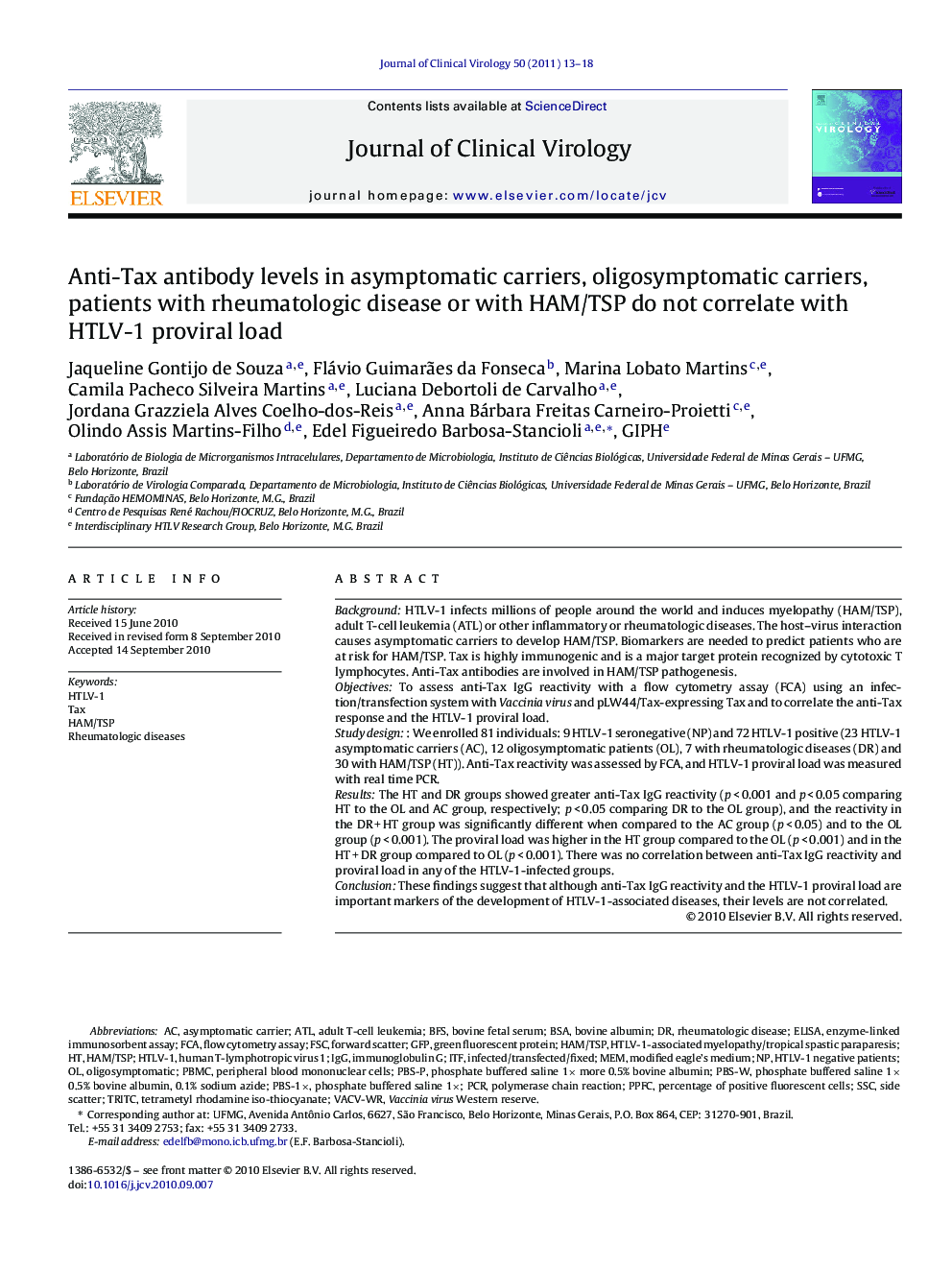| Article ID | Journal | Published Year | Pages | File Type |
|---|---|---|---|---|
| 3369314 | Journal of Clinical Virology | 2011 | 6 Pages |
BackgroundHTLV-1 infects millions of people around the world and induces myelopathy (HAM/TSP), adult T-cell leukemia (ATL) or other inflammatory or rheumatologic diseases. The host–virus interaction causes asymptomatic carriers to develop HAM/TSP. Biomarkers are needed to predict patients who are at risk for HAM/TSP. Tax is highly immunogenic and is a major target protein recognized by cytotoxic T lymphocytes. Anti-Tax antibodies are involved in HAM/TSP pathogenesis.ObjectivesTo assess anti-Tax IgG reactivity with a flow cytometry assay (FCA) using an infection/transfection system with Vaccinia virus and pLW44/Tax-expressing Tax and to correlate the anti-Tax response and the HTLV-1 proviral load.Study design: We enrolled 81 individuals: 9 HTLV-1 seronegative (NP) and 72 HTLV-1 positive (23 HTLV-1 asymptomatic carriers (AC), 12 oligosymptomatic patients (OL), 7 with rheumatologic diseases (DR) and 30 with HAM/TSP (HT)). Anti-Tax reactivity was assessed by FCA, and HTLV-1 proviral load was measured with real time PCR.ResultsThe HT and DR groups showed greater anti-Tax IgG reactivity (p < 0.001 and p < 0.05 comparing HT to the OL and AC group, respectively; p < 0.05 comparing DR to the OL group), and the reactivity in the DR + HT group was significantly different when compared to the AC group (p < 0.05) and to the OL group (p < 0.001). The proviral load was higher in the HT group compared to the OL (p < 0.001) and in the HT + DR group compared to OL (p < 0.001). There was no correlation between anti-Tax IgG reactivity and proviral load in any of the HTLV-1-infected groups.ConclusionThese findings suggest that although anti-Tax IgG reactivity and the HTLV-1 proviral load are important markers of the development of HTLV-1-associated diseases, their levels are not correlated.
